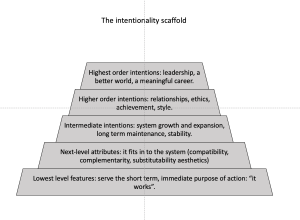The Value Creators Podcast Episode #29. Raushan Gross on Entrepreneurial Value Creation in the AI Economy
Professor Raushan Gross, who teaches Business Management And Leadership at Pfeiffer University, has focused his most recent research on the impact and influence of A.I. on entrepreneurship. He published some of this research in a series of articles at mises.org. One of them links A.I. to The Wealth Of Nations, and, of course, the wealth of nations is driven by entrepreneurship. From this vantage point, Professor Gross identifies the multifaceted impact of AI on society, economics, and business strategies, advocating for a paradigm shift in management thinking to adapt to technological advancements.
Resources:
The Fate or Wealth of Nations: AI, Robotics and Automation
Will AI Learn to Become a Better Entrepreneur than You?
Prices, Food, Employment: AI and Robotics Are for Regular Folks, Not Just the Elite
Would You Hire an AI-powered McRobot or a Human Employee?
Artificial Intelligence Enhances Consumer Sovereignty
Artificial Intelligence Can Serve Entrepreneurs and Markets
The Fear of Mass Unemployment Due to Artificial Intelligence and Robotics Is Unfounded
Show Notes:
0:00 | Intro
2:27 | Exploring AI’s Impact on Entrepreneurship
7:18 | Can AI Surpass Human Entrepreneurship?
8:48 | Exploring AI as a Service and AI Stacking
12:08 | AI as a Team Member in Entrepreneurship
15:10 | Small and Medium Businesses Can Embrace AI for Strategic Advantage
17:13 | Transition to Autonomous Decision-Making with AI
21:13 | Concerns on AI Centralization and Oligopoly
25:15 | Adam Smith: Global Scale AI is the Wealth of Nations
26:40 | Elon Musk on Value Creation: the Value Meter
29:14 | Does AI Redefine Management by Value Metrics?
32:14 | Wrap-Up: Rethinking Management in the Digital Age
Knowledge capsule
AI changes how individuals and entrepreneurial firms interact with the market.
- We can’t be sure of the form the interaction will take.
- But we know that we are using AI in every market transaction
- While some individuals have doomsday visions of AI, entrepreneurs ask, “How can I use this to improve my business and how I serve customers?”
Human ingenuity will always be a critical and irreplaceable part of entrepreneurship.
- AI is an active tool for entrepreneurs.
- It will be a competitive factor in servingand delighting customers.
- It’s a service to entrepreneurs to help them succeed.
Entrepreneurs can assemble and combine bundles or stacks of AI services into complete business models.
- Austrian economics explains how entrepreneurial business consists of combining and recombining value-facilitating assets.
- This is precisely how entrepreneurs utilize AI.
- There’s no need to own the assets, just to control them and their value direction, and this is the business service that today’s AI tools offer.
AI can be a team member in value creation teams recruited by entrepreneurs.
- Most productive work is done in teams.
- AI can be a team member, bringing new knowledge, querying and challenging existing knowledge, and helping to advance knowledge-building at speed.
- AI can also automate a lot of implementation processes, freeing entrepreneurs to focus on creativity and innovation.
AI will also play a role in technological deflation.
- While governmental monetary and fiscal policy creates inflation, the role of the entrepreneur and technology is deflationary: making production faster and lower cost with improved quality.
- AI will contribute by lowering the costs of doing business.
- Entrepreneurs will be more empowered and the general level of well-being will rise.
Any risks lie in the danger of centralization of AI.
- Will governments centralize AI under their singular control?
- WIll the massive investments required in building AI server farms and databases and LLM’s result in a few corporations controlling AI for the whole economy?
- It’s more likely that entrepreneurs will be able to build their own models using base LLM as a platform.
One of Elon Musk’s innovations points to AI as a “value meter”.
- Algorithmic management at Tesla includes the ability of AI to assess the real time value creation product resulting from a team’s work with the resources at its disposal.
- The AI can simultaneously scan all the other value creation opportunities available at the same time and reallocate teams and resources to higher value uses.
- In this way, AI acts as a “value meter” for the productive activities of a work force and factory.
Global Competition in AI:
- There will be a global race for AI dominance among nations.
- Those nations that are most energetic and innovative will shape the future landscape of AI development.

